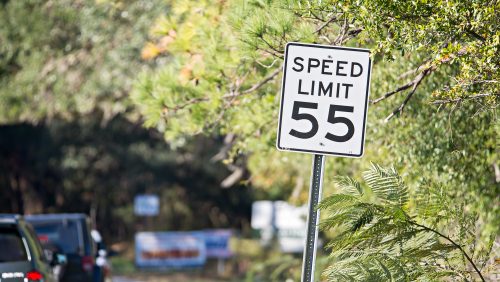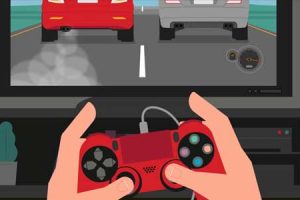Speed and Aggressive Driving
Speeding is one of the most dangerous driving behaviors, accounting in part for one out of every three crashes.

SPEED & AGGRESSIVE DRIVING FACTS:
Speeding is a leading cause of motor vehicle crashes and fatalities. See all crash data.
-
57,000
Number of citations given in 2020 to motorists traveling 20 MPH or more over the posted speed limit. *This number does not include violations issued by automated enforcement
At 55 mph, a vehicle will travel 121 feet before beginning to slow. As speed doubles, stopping distances quadruple. By driving within the speed limit, you give yourself more time to react to what’s happening around you.
-
51%
51 percent of all drivers killed while speeding were between the ages of 20-34. Men were 83 percent of drivers killed.
An average of more than 8,000 crashes are attributed to speeding resulting in more than 3,300 injuries and 99 fatalities.
Slow Down
Speeding endangers everyone on the road. It’s a problem that we all need to address. Speeding rarely results in any noticeable difference in how quickly you arrive at your destination. It’s better to give yourself a few extra minutes to get to where you’re going than to speed.
Posted speed limits are set assuming ideal weather and traffic conditions. However, bad weather, areas of road work, and other factors may require motorists to drive below the posted speed limit.
Slow down. Speeding won’t get you where you’re going any quicker – it will only increase your chances of not getting there at all.
Dealing with Speeding and Aggressive Drivers
Speeding behavior and aggressive drivers not only affect the speeder—it affects other drivers, pedestrians, and bicyclists. Here are tips on how to avoid being an aggressive driver.
Avoid running yellow lights.
Let other drivers merge with you.
Allow for some extra space between you and other vehicles, even if they are driving slower than the speed limit.
Put your pride in the back seat. Don’t challenge an aggressive driver by speeding up or attempting to hold your position in your travel lane.
Ignore harassing gestures and name-calling, and do not return them. Report aggressive drivers to law enforcement by providing a vehicle description, location, license plate number, and direction of travel.
Bishopville Speed Pilot Project
In 2019, MHSO was awarded a grant from three national roadway safety organizations — the Governors Highway Safety Association (GHSA), Insurance Institute for Highway Safety (IIHS), and National Road Safety Foundation (NRSF) to conduct a pilot project to reduce speeding by utilizing cost-effective countermeasures. Through a combination of enforcement, engineering, and public outreach the pilot project successfully reduced speeding during the project.
Speed and Aggressive Driving
If you witness a speeding or aggressive driver - please call 9-1-1 or #77.

